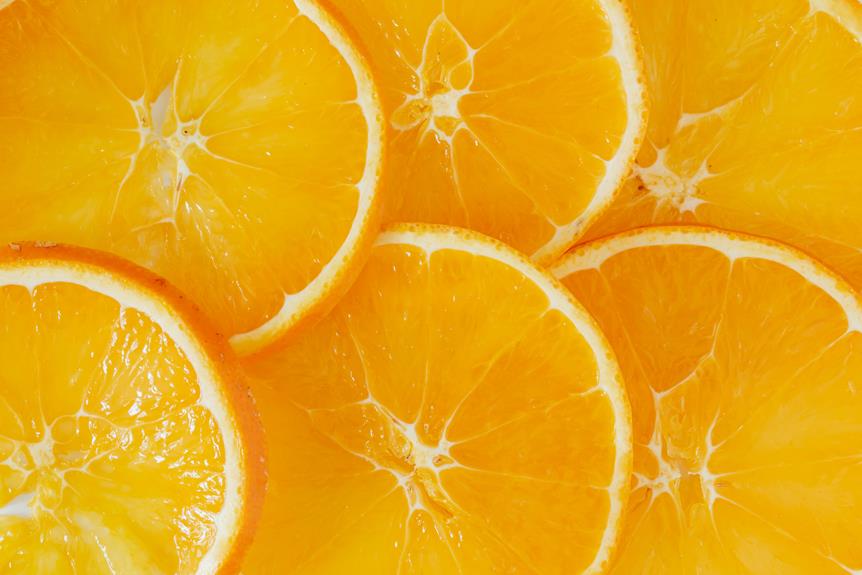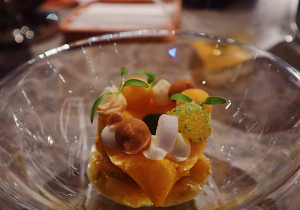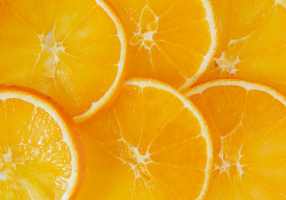The Beginners Guide to the Basics of Molecular Gastronomy
You’re about to dip your toe into the world of molecular gastronomy. This isn’t your grandma’s home cooking – we’re talking science-infused culinary creations that’ll knock your socks off.
Get ready to explore techniques like spherification and sous-vide, and whip up dishes your dinner guests won’t forget. You’re not just cooking; you’re innovating.
Buckle up, this is going to be a wild ride into the fascinating realm of food science!
Understanding the Basics of Molecular Gastronomy
Let’s start by defining molecular gastronomy; it’s a subdiscipline of food science that focuses on the physical and chemical transformations of ingredients during cooking.
The principles of molecular gastronomy involve understanding these transformations and leveraging them to create new and innovative dishes.
To apply these principles, you’ll need to familiarize yourself with various molecular gastronomy techniques, such as spherification, emulsification, and sous-vide cooking.

Defining Molecular Gastronomy
You’re about to dive into the fascinating world of molecular gastronomy, a scientific discipline that involves at least five basic techniques: spherification, foams, sous-vide, fruit caviar, and flavored foams.
Among the molecular gastronomy benefits, you’ll discover new textures and flavors, transforming even the simplest ingredients into culinary masterpieces.
You’ll conduct molecular gastronomy experiments, using scientific methods to create culinary delights.
The applications of molecular gastronomy are limitless, it’s not only used in high-end restaurants, but also in home kitchens around the world.
You’ll need unique molecular gastronomy ingredients like sodium alginate or agar-agar.
However, mastering these techniques isn’t without challenges. Patience, precision, and a keen understanding of each ingredient’s properties are crucial to your success.
Principles of Molecular Gastronomy
In your journey to master molecular gastronomy, it’s essential to understand its basic principles and how they can transform your culinary creations.
This involves understanding the science behind each ingredient, exploring flavor combinations, and experimenting with textures.
Molecular gastronomy, whether practiced at home or in professional kitchens, is all about pushing the boundaries of traditional cooking and exploring new culinary frontiers.
It’s about turning your kitchen into a laboratory, where the rules are fluid and imagination is your guide.
At the heart of this exploration is the scientific understanding of how ingredients interact, and how you can manipulate these interactions to create something truly unique.
Now let’s dive deeper into some specific molecular gastronomy techniques.
Molecular Gastronomy Techniques
To grasp the art of molecular gastronomy, you’ll first need to familiarize yourself with a variety of techniques that are central to this innovative culinary field. The field is rich with molecular gastronomy techniques that transform traditional culinary methods into scientific experiments.
- Spherification: This technique transforms liquid into flavorful spheres, adding a surprising element to your dish.
- Sous Vide: A method of cooking that uses precise temperatures to create dishes with enhanced flavors and textures.
- Emulsification: This technique creates delicate foams, adding a new dimension to your molecular gastronomy recipes.
Each technique necessitates specific molecular gastronomy ingredients and equipment to further your molecular gastronomy experiments. As you master these techniques, you’ll gain the competency needed to experiment with more complex recipes.
Now, let’s delve deeper into the essential tools for molecular gastronomy.
Essential Tools for Molecular Gastronomy
Before diving headfirst into the world of molecular gastronomy, it’s important for you to familiarize yourself with the essential tools that’ll be integral for your culinary experiments. Molecular gastronomy equipment ranges from precision scales, for exact ingredient measurements, to spherification spoons, utilized for creating caviar-like spheres.
When it comes to molecular gastronomy ingredients, you’ll need items like agar-agar and calcium lactate for gelification or xanthan gum for emulsification. Safety precautions are vital; always use gloves and eye protection when handling chemicals.
As for molecular gastronomy flavor pairing, it’s all about creativity and understanding the science behind different tastes.
Lastly, mastering molecular gastronomy plating techniques will elevate your dishes aesthetically, turning them into works of art.
Popular Techniques in Molecular Gastronomy
As you embark on your molecular gastronomy journey, understanding and mastering several popular techniques is crucial.
From the art of spherification to the science behind creating foams and the precision of sous-vide cooking, each method offers unique ways to manipulate ingredients and transform dishes.
Techniques such as making fruit caviar and creating flavored foams can elevate your culinary creations, adding layers of taste, texture, and visual appeal.
Spherification Process
In the realm of molecular gastronomy, you’ll often come across the fascinating spherification process, a technique that’s all about transforming a liquid into a sphere by using sodium alginate and calcium chloride.
Spherification troubleshooting techniques help you perfect the process and avoid common pitfalls like weak sphere structure or inconsistent sizes.
Innovative spherification flavors, from tangy citrus to savory umami, open up a world of culinary creativity.
Spherification has applications in molecular mixology, creating visually stunning and flavor-packed cocktail garnishes.
Spherification in savory dishes can add an unexpected burst of flavor and texture.
Dessert presentation is elevated with spherified components, adding a sense of whimsy and surprise.
Now, let’s shift gears and delve into another fascinating molecular gastronomy technique: creating foams.
Creating Foams
You’ll find that making foams is a key skill in molecular gastronomy. There are a multitude of techniques you can experiment with to achieve varying textures, flavors, and densities.
Foam stability is crucial, often achieved using stabilizers like lecithin or gelatin. Layering flavors in foams is an art, accomplished by combining your base, be it a fruit juice or a savory broth, with the right emulsifier.
Foams find exciting applications in desserts, adding a surprising punch to your sweet creations. While foams are popular, foam alternatives like airs or espumas expand your culinary repertoire.
Sous-vide Cooking
While you’re diving into molecular gastronomy, don’t overlook the art of sous-vide cooking, a technique that brings precision and consistency to your culinary creations.
This method is all about control. The sous vide temperature is precisely regulated, ensuring consistent results every time. Selecting the right sous vide equipment such as a high-quality immersion circulator and vacuum sealer, is crucial for success.
Sous vide recipes are diverse, ranging from meats and fish to vegetables and desserts. Sous vide cooking times vary depending on the dish, but the beauty is that it’s almost impossible to overcook. Sous vide benefits include enhanced flavors, perfect texture, and improved nutritional value.
Now that you’re familiar with sous-vide, let’s dive into another fascinating technique – making fruit caviar.
Making Fruit Caviar
Anyone can master the technique of making fruit caviar, but it’s essential to understand the science behind it first. This involves advanced spherification techniques, turning fruit juices into tiny gel spheres resembling caviar. It’s a popular element in molecular gastronomy for cocktails and desserts.
If spherification seems daunting, fruit caviar alternatives exist. Consider creating fruit jellies or foams instead. For presentation, think creatively. Serve fruit caviar in a cocktail glass or a spoon for an elegant touch.
However, you may encounter issues in your fruit caviar production. If spheres aren’t forming properly, ensure your solution has the correct ratio of sodium alginate to calcium chloride. With practice and patience, you’ll master the art of fruit caviar.
Flavored Foam Techniques
Often, you’ll find that creating flavored foams is a staple in the world of molecular gastronomy, and it’s not as complicated as it may seem at first. With a few simple ingredients and techniques, you can create a variety of interesting foam flavor combinations.
Flavored foam applications: Foams can be used to add a light and airy texture to a range of dishes, from appetizers to desserts.
Foam stability factors: The stability of your foam depends on factors such as the concentration of the foam stabilizer and the temperature of the liquid.
Alternative foam ingredients: While gelatin is commonly used, alternatives like soy lecithin or agar-agar can also create a stable foam.
Experiment with various foam presentation techniques to enhance your culinary creations. Bear in mind, the key to a successful flavored foam lies in balance and creativity.
Emulsification in Culinary
You mightn’t know it yet, but emulsification is a culinary technique you’ve likely used before, and it’s a crucial aspect of molecular gastronomy. Think of vinaigrettes or hollandaise sauces; they’re examples of emulsification techniques, where two immiscible liquids are mixed to form a stable, homogenous substance.
The benefits of emulsification are vast, from enhancing texture and flavor to increasing absorption of nutrients. In molecular gastronomy, emulsification takes on a more innovative role, allowing for the creation of unique dishes and presentations. Compared to other techniques, emulsification offers more opportunities for culinary creativity, such as creating foams and airs.
Now that you understand the creative uses of emulsification, let’s delve into a related topic, the meat gluing method.
Meat Gluing Method
Something else you’ll discover in molecular gastronomy is the meat gluing method, but don’t let the name scare you off. It’s a technique that uses a natural enzyme called transglutaminase to bond proteins together, creating unique shapes and textures in dishes.
Let’s delve into the meat gluing applications:
- It’s used to combine different cuts of meat into a single piece, enhancing presentation.
- It’s a tool for creating unique textures and flavors by fusing different kinds of meats.
- It allows for the efficient use of leftover or undesirable pieces, reducing waste.
Regarding meat gluing safety, it’s perfectly safe as long as you handle the raw meat properly. And if you’re vegetarian, there are meat gluing alternatives like agar or pectin. The benefits of meat gluing are plentiful, from culinary creativity to waste reduction.
Now, let’s transition into another fascinating topic: gelification techniques.
Gelification Techniques
Diving into gelification techniques, you’re entering a realm where liquids become solids in the most creative ways possible. In molecular gastronomy experiments, gelification applications are limitless, from encapsulating flavors in bite-sized orbs to creating jellied desserts.
The key to mastering these techniques is understanding gelification agents. These range from naturally derived substances like agar and pectin, to synthetics like kappa-carrageenan and gellan gum. Each agent varies in strength, texture, and temperature tolerance, so gelification troubleshooting is crucial. Missteps can lead to inconsistent textures or failed set.
Gelification in desserts is particularly popular, often providing a surprising twist to traditional recipes. Now that we’ve explored gelification, let’s proceed onto the subsequent section: a step-by-step guide to creating spherical dishes.
Step-by-Step Guide: Creating Spherical Dishes
Let’s embark on a five-step journey to create your first spherical dish, a fundamental technique in molecular gastronomy known as spherification. This innovative plating technique is popular in molecular gastronomy experiments, both at home and in professional kitchens. Here’s a simplified process:
- Start with a flavorful liquid, like fruit juice.
- Mix sodium alginate into your chosen liquid.
- Prepare a bath of calcium chloride in water.
- Drop small amounts of the alginate mixture into the bath.
- Rinse the resulting spheres in clean water.
Voila! You’re creating spherical dishes, a dazzling display of molecular gastronomy at home. Practice makes perfect, so don’t be discouraged if your first few attempts aren’t flawless.
Now, let’s move on to another exciting technique: making culinary foams.
How to Make Culinary Foams
You’ve mastered the art of spherification, and now it’s time to dive into another cornerstone of molecular gastronomy: creating culinary foams.
Culinary foam flavors can range from savory broths to sweet fruit infusions, opening up a world of textural elements to your dishes.
The key to a successful foam lies in its stability, which is achieved by using a stabilizer such as lecithin or gelatin. However, foam alternatives like whipped creams and meringues can also be utilized for different textures.
The foam application and presentation significantly elevate the dish’s visual appeal, creating a gourmet experience that transcends the ordinary.
Now that you’re familiar with foams, let’s explore another exciting culinary technique in the next section: sous-vide for beginners: tips and tricks.
Sous-vide for Beginners: Tips and Tricks
So, you’re new to the world of sous-vide, and you’re eager to give it a shot – here are some basic tips and tricks to help you get started and ensure a delicious outcome.
- Invest in quality sous vide equipment. A good immersion circulator is key to maintaining precise temperature control, which is crucial for perfect sous vide cooking.
- Understand sous vide temperature control and cooking times. Each food has its optimal temperature and time for best results.
- Experiment with sous vide flavor infusion. Sealing food in a bag allows for intense flavor absorption.
Mastering the Art of Fruit Caviar
With creativity and curiosity, you’ll master the art of fruit caviar, merging science and culinary skill in this exciting aspect of molecular gastronomy. Start by exploring different flavors for these flavorful spheres, perhaps combining different fruits for unique creations.
Then, it’s on to texture experimentation. By playing with agar agar ratios, you’ll achieve the perfect consistency for your fruit caviar.
Visual presentation is key, too. Different oils can give your caviar a unique sheen, enhancing the dish aesthetically.
Don’t limit fruit caviar to desserts; incorporate them in savory dishes for a surprising burst of sweetness. This fusion of flavors can make your dishes stand out.
Now that you’ve mastered fruit caviar, let’s move on to using flavored foams in your dishes.
Using Flavored Foams in Your Dishes
Let’s dive into the world of flavored foams, another fascinating aspect of molecular gastronomy that can elevate your culinary creations to a new level. Experimenting with unique flavors, you can explore different fruit combinations for your foams, introducing a whole new world of taste sensations.
Consider these applications:
- Incorporating foams in savory dishes, like soups and sauces. Imagine a rich tomato soup topped with a basil foam.
- Texture play, where you can use the light, airy characteristics of foam to add complexity to desserts.
- Foam garnishes, creating beautiful, flavorful foams to top off your dishes. A raspberry foam on a chocolate mousse, perhaps?
And don’t forget the fun you can have with foam cocktails, where the visuals are as important as the taste. The opportunities are endless.
Frequently Asked Questions
What Are Some Easy Molecular Gastronomy Recipes for Beginners to Try at Home?
You can try simple molecular gastronomy recipes like foam curry or arugula spaghetti. Always ensure you’ve the right gastronomy tools, select ingredients carefully, follow safety measures, understand the science, and experiment with tastes.
Are There Specific Culinary Schools or Courses That Specialize in Teaching Molecular Gastronomy?
Yes, culinary schools like Le Cordon Bleu offer gastronomy degrees. You’ll find online learning options, internships, and courses in molecular mixology. These can boost your career prospects in the competitive culinary world.
Is Molecular Gastronomy Expensive to Get Into as a Hobby?
Starting molecular gastronomy as a hobby isn’t necessarily expensive. Careful budgeting, buying essential equipment, and using DIY kits can help. Join gastronomy communities for tips and consider the sustainability aspect of your purchases.
Apart From the Taste and Presentation, Are There Nutritional Benefits to Molecular Gastronomy?
Yes, molecular gastronomy’s health impacts can include nutrient preservation, flavor enhancement, and digestibility improvement. It can also promote sustainability by utilizing every part of an ingredient, reducing food waste.
Can Molecular Gastronomy Techniques Be Applied to Vegan or Vegetarian Cooking?
Absolutely! You can create vegan foams, plant-based spherification, and vegetarian emulsions. Try dairy-free sous vide for precise cooking or vegan-friendly gelification for unique textures. Molecular gastronomy isn’t just for meat-eaters!


